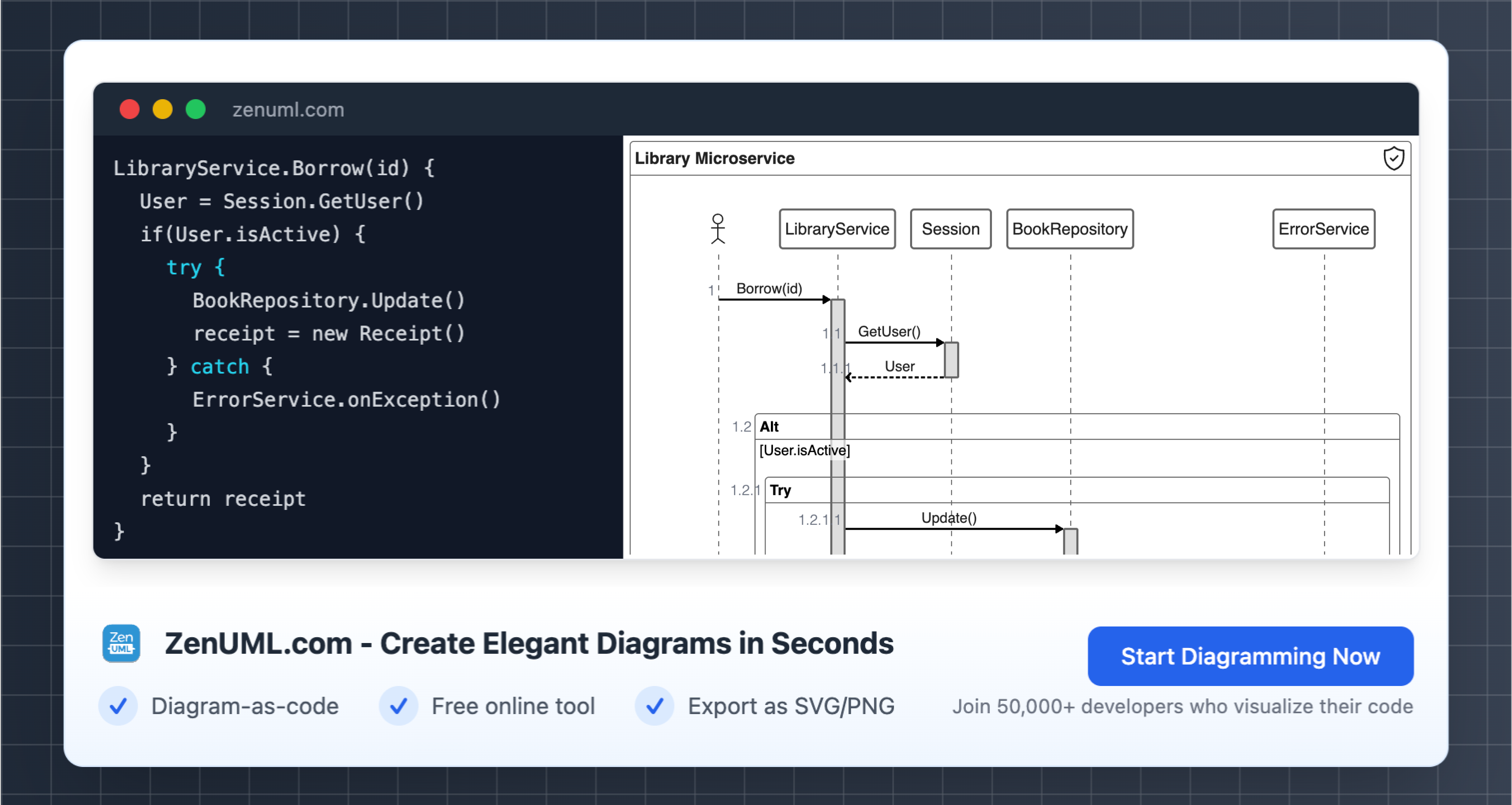Introduction
Behavior-Driven Development (BDD) has become a popular approach in the software development industry, as it focuses on defining and validating the expected behavior of an application before diving into the implementation details. One powerful tool that can be seamlessly integrated into the BDD workflow is sequence diagrams. Sequence diagrams provide a visual representation of the interactions between different actors and components within a system, making it easier for both technical and non-technical stakeholders to understand and collaborate on the desired application behavior.
In this blog post, we will explore the synergy between BDD and sequence diagrams, and how you can leverage this combination to enhance your software development process. We'll dive into practical examples, using ZenUML sequence diagrams to illustrate the concepts, and demonstrate how this approach can improve communication, collaboration, and ultimately, the quality of your software.

